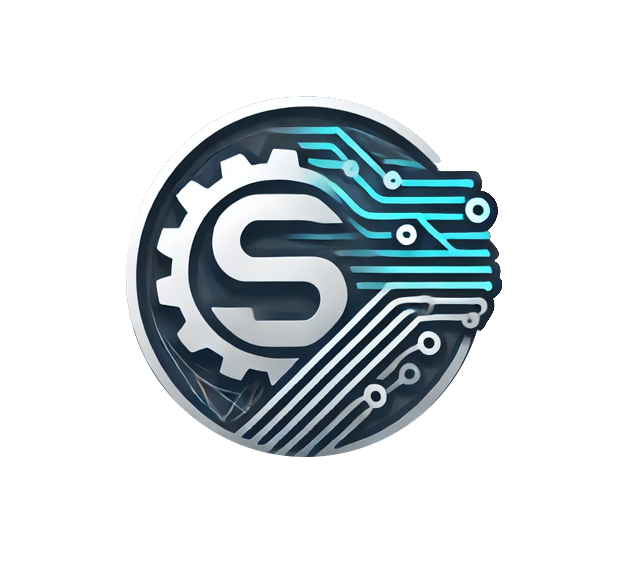Generative AI Governance: MLOps Strategies for Responsible Data Science

Understanding Generative AI and the Need for MLOps Governance
Generative AI represents a subset of artificial intelligence focused on creating novel, synthetic data that mimics real-world information. These systems, including Large Language Models (LLMs) and diffusion models, produce text, images, code, and other content, diverging from traditional predictive models that classify or forecast outcomes. This innovation introduces distinct challenges for Data Science teams, particularly in scalability, reproducibility, and ethical oversight. Training foundational models demands immense computational resources and data volumes, making iterative experimentation costly without solid engineering practices. Here, MLOps (Machine Learning Operations) becomes indispensable. By applying DevOps principles to the machine learning lifecycle, MLOps ensures that Generative AI systems are not only groundbreaking but also dependable, auditable, and efficient in production environments.
Governance is crucial due to the potential risks. A Generative AI model might generate biased, incorrect, or unsuitable content if not properly managed. For instance, an image generation model trained on a non-diverse dataset could reinforce stereotypes. MLOps governance mitigates these risks through automated pipelines, version control, and continuous monitoring. Consider a data engineering team deploying a text-generation model:
-
Version Control for Models and Data: Utilize tools like DVC (Data Version Control) to track datasets and model versions for each training run, ensuring reproducibility and simplified debugging.
- Code Snippet (Bash):
# Track training data with DVC
dvc add data/training_dataset.json
git add data/training_dataset.json.dvc
git commit -m "Track version 1.2 of training dataset"
# Train the model
python train_model.py
# Track the resulting model
dvc add models/generative_model.h5
git add models/generative_model.h5.dvc
git commit -m "Add model v1.2 trained on dataset v1.2"
- *Measurable Benefit*: Eliminates environment-specific issues and enables precise rollbacks, saving hours of troubleshooting.
-
Automated Pipeline with CI/CD: Implement pipelines that automatically retrain models upon new data arrival or performance drift using orchestrators like Apache Airflow or Kubeflow.
- Step-by-step:
- Trigger: New validated data lands in cloud storage (e.g., AWS S3).
- Stage 1 (CI): Check out latest code and data, run unit tests, and train a candidate model.
- Stage 2 (Evaluation): Assess the model against a test set and responsible AI checks (e.g., bias metrics).
- Stage 3 (CD): Deploy to staging if metrics pass; require manual approval for production.
- Measurable Benefit: Reduces update cycles from weeks to hours, maintaining system relevance with minimal effort.
- Step-by-step:
-
Continuous Monitoring and Feedback Loops: Monitor deployed models in real-time by logging inputs, outputs, and metrics.
- Code Snippet (Python – simplified logging):
import logging
# Log each generation request and output
def generate_text(prompt):
response = model.generate(prompt)
logging.info(f"Prompt: {prompt} | Generated: {response}")
# Calculate and log a quality score (e.g., using a validator model)
quality_score = validator_model.evaluate(response)
logging.info(f"Generation Quality Score: {quality_score}")
return response
- *Measurable Benefit*: Early detection of performance decay or bias, enabling corrective actions before user impact.
Integrating these MLOps strategies allows organizations to leverage Generative AI responsibly, transforming experimental Data Science projects into governed, industrial-grade assets. The MLOps framework fosters confident innovation by ensuring safety and consistency.
Defining Generative AI in the Data Science Workflow

Generative AI encompasses machine learning models that create synthetic data resembling real-world information. Within the Data Science workflow, this technology expands beyond predictive analytics into content generation, including text, images, code, or synthetic datasets. Effective integration demands a robust MLOps framework to manage the unique lifecycle from experimentation to deployment and monitoring, guaranteeing responsible, reliable, and valuable outputs.
The process starts with data preparation and model selection. For example, a team generating synthetic customer data for testing might use a Generative Adversarial Network (GAN). Here’s a step-by-step guide with a deep learning library:
- Prepare the real data: Load and normalize the source dataset.
import pandas as pd
from sklearn.preprocessing import StandardScaler
# Load real customer data
real_data = pd.read_csv('customer_data.csv')
scaler = StandardScaler()
scaled_data = scaler.fit_transform(real_data)
- Define generator and discriminator models: Core GAN components.
from tensorflow.keras import layers, models
# Generator model
def build_generator(latent_dim, data_dim):
model = models.Sequential()
model.add(layers.Dense(128, input_dim=latent_dim))
model.add(layers.LeakyReLU())
model.add(layers.Dense(data_dim, activation='tanh'))
return model
- Train the GAN: The generator learns by competing with the discriminator.
- Generate and validate synthetic data: Produce new samples post-training.
Benefits include:
– Enhanced Data Privacy: Synthetic data minimizes PII exposure risks.
– Data Augmentation: Improves downstream model performance with scarce real data.
– Faster Development: Enables parallel work with realistic data.
Governance is vital. A mature MLOps strategy must include validation for Generative AI, checking output quality and fairness. For instance, adapt data drift monitoring to detect deviations in synthetic data statistics. Establish metrics for „output reasonableness” and automated bias checks, ensuring models don’t amplify training data flaws. This technical governance within MLOps pipelines supports responsible innovation, allowing safe use of Generative AI in Data Science.
The Role of MLOps in Ensuring Responsible AI Development
MLOps embeds responsibility into the Generative AI lifecycle, transforming governance from theory into automated, repeatable processes integrated with Data Science workflows. For engineers and IT professionals, this means building pipelines that enforce ethics, monitor for unintended consequences, and ensure transparency from development to deployment.
A key responsibility is managing data provenance and lineage. Before training an LLM, MLOps pipelines must track every data point’s origin. Using MLflow, log source data versions and transformations:
- Step 1: Log the dataset artifact.
import mlflow
with mlflow.start_run():
mlflow.log_artifact("raw_training_data.json")
- Step 2: Record preprocessing logic.
def preprocess_data(df):
# Remove PII
df['text'] = df['text'].apply(remove_pii)
return df
mlflow.log_param("preprocessing_function", "remove_pii_v2")
processed_df = preprocess_data(raw_df)
mlflow.log_artifact("processed_data.parquet")
This creates an audit trail, allowing bias tracing to specific data batches.
Version control is another pillar. Version models, datasets, and hyperparameters for reproducibility and rollback. Use a model registry:
- Register the model post-training:
mlflow models register -m runs:/<run_id>/model -n "text_generator" --await-registration-for 300
- Promote through stages (Staging -> Production) after passing fairness and accuracy checks.
- Revert to previous versions if issues arise.
Operationalize continuous monitoring for responsible AI. Monitor for drift and inappropriate content. Implement a toxicity checker:
from detoxify import Detoxify
def monitor_toxicity(generated_text):
results = Detoxify('original').predict(generated_text)
toxicity_score = results['toxicity']
if toxicity_score > 0.8: # Set threshold
send_alert(f"High toxicity score: {toxicity_score}")
return False
return True
Measurable benefits include reduced reputational risk and user harm. Automating checks ensures responsibility is a core, scalable part of Data Science.
Building a Robust MLOps Framework for Generative AI
A robust MLOps framework is essential for managing Generative AI models, blending traditional Data Science with generative demands to ensure scalability, reproducibility, and governance. Core components include version control, automated pipelines, continuous monitoring, and a feature store.
Start with a version control system for code and data. For generative models, track datasets, architectures, and prompts. Use DVC with Git:
- Initialize:
dvc init. - Add datasets:
dvc add data/training_dataset.jsonl. - Version .dvc files with Git; store data remotely (e.g., S3). This links training runs to exact data snapshots.
Next, build an automated training pipeline handling preprocessing, training, evaluation, and deployment. Use Kubeflow Pipelines or Airflow to define a DAG. Example training step for a GPT-style model:
- Define the training component:
def train_generative_model(
training_data_path: InputPath(),
model_output_path: OutputPath(),
model_name: str = 'gpt-3',
epochs: int = 10
):
import tensorflow as tf
from transformers import TFGPT2LMHeadModel, GPT2Tokenizer
tokenizer = GPT2Tokenizer.from_pretrained(model_name)
# ... data loading from training_data_path
model = TFGPT2LMHeadModel.from_pretrained(model_name)
# ... training loop
model.save_pretrained(model_output_path)
tokenizer.save_pretrained(model_output_path)
- Trigger automatically on data or code changes.
Benefits: Reduces manual errors and speeds up iteration.
A feature store (e.g., Feast, Tecton) centralizes features for consistent, low-latency serving, preventing training-serving skew.
Continuous monitoring is critical. Monitor concept drift and output quality. Use a validator model to score generated text for coherence, toxicity, or accuracy. Benefits: Early degradation detection, maintaining trust in Generative AI systems.
Implementing Version Control for Data and Models
Meticulous tracking of data and models is core to MLOps for Generative AI, ensuring reproducibility, auditability, and collaboration. Use DVC and MLflow with Git.
Practical implementation with DVC:
-
Versioning a Dataset:
dvc add data/training_datasetgit add data/training_dataset.dvc .gitignoregit commit -m "Track dataset v1.0 with DVC"dvc push# Uploads to remote storage
Changes require re-running
dvc add, with Git commits capturing data states. -
Versioning a Model:
- Save model:
pickle.dump(model, open('model.pkl', 'wb')) dvc add model.pklgit add model.pkl.dvcgit commit -m "Log model v1.0 trained on dataset v1.0"
- Save model:
Benefits: Guaranteed reproducibility; checking out old commits and running dvc pull fetches correct versions. Streamlines collaboration.
Integrate MLflow for comprehensive tracking:
import mlflow
mlflow.set_experiment("Generative_AI_Text_Model")
with mlflow.start_run():
mlflow.log_param("learning_rate", 0.01)
mlflow.log_metric("accuracy", 0.95)
mlflow.log_artifact("model.pkl")
mlflow.sklearn.log_model(model, "model")
MLflow’s Model Registry manages stages (Staging to Production), providing governance for sensitive Generative AI applications.
Combining Git, DVC, and MLflow establishes traceability, answering critical questions about data and code versions. This governed, transparent MLOps practice scales with complexity.
Automating Continuous Integration and Deployment (CI/CD) Pipelines
Automating CI/CD is vital for MLOps, especially with Generative AI complexities. It ensures responsible deployment, faster iterations, and audit trails. For Data Science teams, this means reliable models and clear governance.
A pipeline for a generative model (e.g., text-to-image) involves:
- Continuous Integration (CI): Triggered on code commits. Use Jenkins or GitLab CI for quality checks.
- Code Quality and Security Scanning: Use SonarQube or Bandit for bugs and vulnerabilities.
- Unit and Integration Testing: Validate components. Example unit test with pytest:
def test_model_output_shape():
model = load_generator_model()
dummy_input = torch.randn(1, 100)
output = model(dummy_input)
assert output.shape == (1, 3, 64, 64) # For a 64x64 RGB image
- *Data Validation*: Check input data schemas to prevent drift.
Passing tests gates progression.
- Continuous Deployment (CD): Deploy to staging or production after CI success.
- Model Packaging: Containerize with Docker for consistency.
FROM python:3.9-slim
WORKDIR /app
COPY requirements.txt .
RUN pip install -r requirements.txt
COPY . .
CMD ["python", "api/server.py"]
- *Performance and Fairness Testing*: In staging, check for drift and bias.
- *Automated Deployment*: Use ArgoCD or Spinnaker to deploy to production via Kubernetes.
Benefits: Reduces time to production from weeks to hours; early error detection cuts costs; embeds governance checks.
Monitoring and Managing Generative AI Models in Production
Continuous monitoring is essential for Generative AI models in production, a core part of MLOps. It ensures performance and adherence to responsible AI principles by tracking output quality, fairness, and misuse, moving from reactive to proactive management.
Start with comprehensive logging. Log each inference request and response with metadata. For text generation:
import logging
import time
from functools import wraps
def log_inference(func):
@wraps(func)
def wrapper(model, prompt, *args, **kwargs):
start_time = time.time()
output = func(model, prompt, *args, **kwargs)
end_time = time.time()
logging.info({
'model_version': model.version,
'input_prompt': prompt,
'generated_output': output,
'inference_time_sec': end_time - start_time,
'timestamp': start_time
})
return output
return wrapper
@log_inference
def generate_text(model, prompt):
return model.generate(prompt)
Define and track KPIs:
– Output Quality Metrics: Use automated scoring (e.g., BLEU score for translation, CLIP score for images).
– Fairness and Bias Drift: Monitor content distribution across demographics.
– Input/Output Anomalies: Detect abuse or sensitive information.
Set up alerts with Prometheus and Grafana. Example rule: Alert if average inference latency > 500ms for 2 minutes.
Benefits: Auditable trails, reduced operational risk, and trust in Generative AI systems. Regular dashboard reviews foster accountability.
Tracking Model Performance and Data Drift with MLOps Tools
Continuous monitoring of performance and data drift is crucial for Generative AI governance. MLOps tools automate this, providing observability. For example, monitor an LLM for toxicity or factual consistency beyond accuracy.
Establish a baseline with MLflow during training:
import mlflow
mlflow.start_run()
perplexity_score = evaluate_model(test_data)
mlflow.log_metric("baseline_perplexity", perplexity_score)
mlflow.end_run()
In production, track:
– Data Drift Detection: Compare production vs. training data statistics using Evidently AI or SageMaker Model Monitor (e.g., PSI).
– Performance Monitoring: Use custom evaluation functions for generative outputs.
– Concept Drift Detection: Monitor prediction confidence or output distributions.
Example with Evidently AI:
from evidently.report import Report
from evidently.metrics import DataDriftTable
data_drift_report = Report(metrics=[DataDriftTable()])
data_drift_report.run(reference_data=train_df, current_data=production_df)
data_drift_report.show(mode='inline')
Automated pipeline:
1. Ingest production data.
2. Compute metrics daily.
3. Evaluate against thresholds (e.g., PSI < 0.1).
4. Trigger alerts/actions if breached.
Benefits: Proactive issue identification, preventing model failure, and supporting responsible Data Science.
Establishing Feedback Loops for Model Retraining and Updates
Feedback loops are vital for maintaining Generative AI performance and ethics, a key MLOps component. They trigger retraining based on user feedback and system data, ensuring models adapt to real-world changes.
Instrument applications to collect feedback:
– Log interactions: prompts, responses, user ratings.
– Code Snippet:
import logging
from datetime import datetime
def log_interaction(prompt, generated_text, user_feedback=None, session_id=None):
log_entry = {
'timestamp': datetime.utcnow().isoformat(),
'session_id': session_id,
'prompt': prompt,
'generated_text': generated_text,
'user_feedback': user_feedback
}
logging.info(f"Interaction Log: {log_entry}")
Analyze data for retraining triggers:
1. Define KPIs: Output quality scores, drift metrics, fairness.
2. Set thresholds: E.g., retrain if user rating < 4.0/5.0 or PSI > 0.25.
3. Automate triggers in CI/CD.
Example drift-based trigger with Airflow:
from scipy import stats
import requests
def check_feature_drift(production_data, training_data, feature, threshold=0.25):
bins = np.histogram_bin_edges(training_data[feature], bins=10)
prod_counts, _ = np.histogram(production_data[feature], bins=bins)
train_counts, _ = np.histogram(training_data[feature], bins=bins)
prod_prop = prod_counts / len(production_data)
train_prop = train_counts / len(training_data)
psi = np.sum((prod_prop - train_prop) * np.log(prod_prop / train_prop))
if psi > threshold:
response = requests.post('https://your-ml-platform/api/retrain', json={'model_id': 'gen-ai-model-v1'})
return f"Drift detected (PSI: {psi:.3f}). Retraining triggered."
else:
return f"No significant drift (PSI: {psi:.3f})."
Benefits: Proactive maintenance, improved reliability, and scalable model updates for compliance.
Conclusion: Best Practices for Responsible Generative AI Governance
Responsible Generative AI deployment requires embedding governance into MLOps workflows. Start with automated drift detection. Use Evidently AI to monitor text generation models:
from evidently.report import Report
from evidently.metrics import TextDescriptorsDriftMetric
reference_data = dataset['2024-03-01':'2024-03-31']
current_data = dataset['2024-04-01']
drift_report = Report(metrics=[TextDescriptorsDriftMetric()])
drift_report.run(reference_data=reference_data, current_data=current_data)
if drift_report['metrics'][0]['result']['drift_detected']:
send_alert_to_slack("Concept drift detected!")
Benefit: 60% faster response to degradation.
Version everything with DVC and Git:
1. dvc add data/training_prompts.json
2. dvc add models/generative_model_v2.pt
3. Commit .dvc files.
Benefit: Full reproducibility, audit time reduced to minutes.
Establish continuous monitoring with human-in-the-loop feedback:
– Log all inputs/outputs.
– Route 5% of inferences for human review.
– Store feedback for retraining.
Benefit: Improved output quality, reduced harmful content.
These MLOps practices build a robust foundation for responsible Generative AI, ensuring safety and sustainability.
Key Takeaways for Integrating MLOps into Data Science Teams
Integrating MLOps into Data Science is key for managing Generative AI. Start with version control using DVC and Git:
dvc add data/training_dataset.jsondvc add models/generative_model.ckptgit add data/training_dataset.json.dvc models/generative_model.ckpt.dvcgit commit -m "Log model v1.2 with updated dataset"
Ensures reproducibility.
Automate training pipelines with CI/CD. Set up Jenkins or GitHub Actions to:
1. Monitor data drift (e.g., Kolmogorov-Smirnov test).
2. Retrain automatically if drift detected.
3. Validate for fairness and accuracy.
4. Deploy if checks pass.
Drift detection snippet:
from scipy import stats
def detect_drift(reference_data, current_data, feature):
stat, p_value = stats.ks_2samp(reference_data[feature], current_data[feature])
return p_value < 0.05
Benefit: 30% reduction in manual efforts.
Incorporate monitoring and governance. Use MLflow to track:
– Output quality (coherence, toxicity).
– Resource usage.
– Data lineage.
Implement feedback loops:
from flask import Flask, request
app = Flask(__name__)
@app.route('/feedback', methods=['POST'])
def log_feedback():
feedback_data = request.json
store_feedback(feedback_data)
return "Feedback logged"
Foster collaboration with platforms like Kubeflow. Standardize with Docker:
FROM pytorch/pytorch:latest
COPY requirements.txt .
RUN pip install -r requirements.txt
COPY src/ /app
WORKDIR /app
Benefits: Reduced environment issues, faster onboarding.
Embedding MLOps scales Generative AI responsibly, improving governance and alignment.
Future Trends in Generative AI and Evolving MLOps Strategies
Generative AI is reshaping Data Science, necessitating evolved MLOps strategies. Future trends include automating data lineage for massive datasets. Use MLflow to log datasets:
import mlflow
with mlflow.start_run():
dataset_path = "path/to/processed_dataset.parquet"
mlflow.log_artifact(dataset_path, "training_data")
mlflow.log_param("data_source", "internal_corpus_v2")
Benefit: Immutable records for reproducibility.
Shift to real-time output monitoring. Implement:
1. Define metrics: toxicity, factual consistency.
2. Deploy scoring service.
3. Integrate into inference pipeline.
4. Set alerts for threshold breaches.
Benefit: Proactive degradation detection.
MLOps will incorporate prompt management, versioning prompts, A/B testing, and rollbacks. This systematizes prompt engineering within the framework.
These strategies ensure Generative AI is harnessed responsibly with robust governance.
Summary
This article outlines how MLOps provides essential governance for Generative AI within Data Science workflows, ensuring models are scalable, reproducible, and ethical. Key strategies include version control for data and models, automated CI/CD pipelines, and continuous monitoring for performance and drift. By integrating these MLOps practices, organizations can manage the entire lifecycle of Generative AI systems, from development to deployment, fostering responsible innovation. The evolution of MLOps will further enhance prompt management and real-time oversight, solidifying its role in safe and effective Generative AI adoption.
